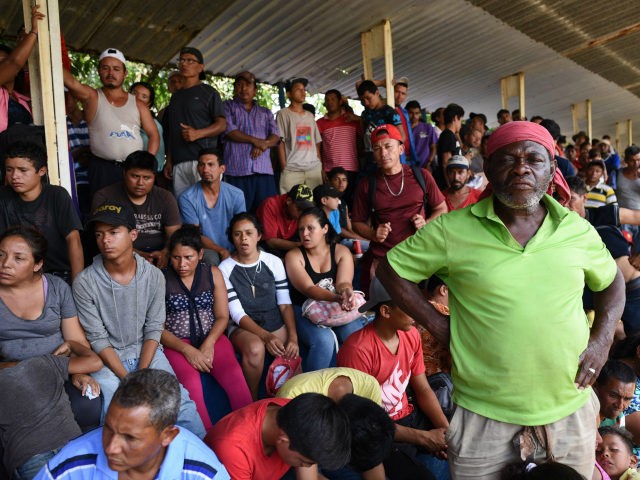The unreleased section of the U.S.-Mexico migration deal calls for a regional treaty if the deal fails to greatly shrink the flow of migrants up to the U.S. border, Mexico’s foreign minister said Monday.
“Both parties agree that if the above measures do not have the expected results, additional measures will be taken,” Foreign Minister Marcelo Ebrard reportedly said Monday. “We would sit down to discuss with other countries such as Panama, Brazil, Guatemala.”
Ebrard’s revelation helps explain what President Donald Trump tweeted Monday:
“They’re trying the same approach we are trying: to get some cooperation from the source countries,” said Jessica Vaughan, policy director at the Center for Immigration Studies. “They know that if they can get cooperation from El Salvador, Honduras, and Guatemala, that will lessen the pressure on their southern border.”
“It is important that Mexico do this. There is no question that we need to reduce the flow of people who can make it through Mexico,” she said, adding:
But we cannot rely on other countries to solve the problem for us, especially because the main reason for this problem is our policy [of admitting migants]. … as long as their friends and family keep succeeding, and as long as people are not sent home, even the best efforts of Mexico are not enough.
“A regional migration deal is actually a good thing,” responded Theresa Brown, a pro-migration advocate at the establishment Bipartisan Policy Center. “This is a regional crisis”:
The Remain in Mexico policy allows border agencies to end the “catch and release” policy imposed by Congress and the courts. Instead of being released to walk into U.S. workplaces to take jobs at very low wages, the migrants will be sent back to Mexico until they can be bussed to their asylum-court hearings in the United States. The return policy will likely wreck the cartels’ labor trafficking business, which depends on migrants getting U.S. jobs to repay their smuggling debts:
Prior to the deal, Mexico kept the Remain in Mexico program at very low levels. For example, only about 10,000 migrants have been sent back to Mexico, out of roughly 330,000 who crossed the border in the last three months.
On June 9, the Associated Press described several migrants who have been sent back to Mexico before the deal was signed:
[Luis] Torres, 40, said that he and his 12-year-old son entered Texas from Reynosa, Mexico, last month. U.S. authorities then flew them to San Diego where they were detained for two weeks, he said.
Torres was confused about the status of his case, because he wasn’t sure whether he had requested asylum by signing documents that agents put in front of him without explaining. In any case he was given a date to return to the U.S. in September.
Torres, a carpenter, left because his neighborhood in Honduras’s capital, Tegucigalpa, is dangerous and work is hard to come by. He sent his other four children to live with their grandmother outside the city. Torres said he and his son did not encounter problems in Mexico during the 26 days they took to reach the U.S. border.
Mexico is already taking to deploying security forces along its border with Guatemala. In response, migrants are asking for entry papers that would allow them to travel up to the U.S. border:

COMMENTS
Please let us know if you're having issues with commenting.